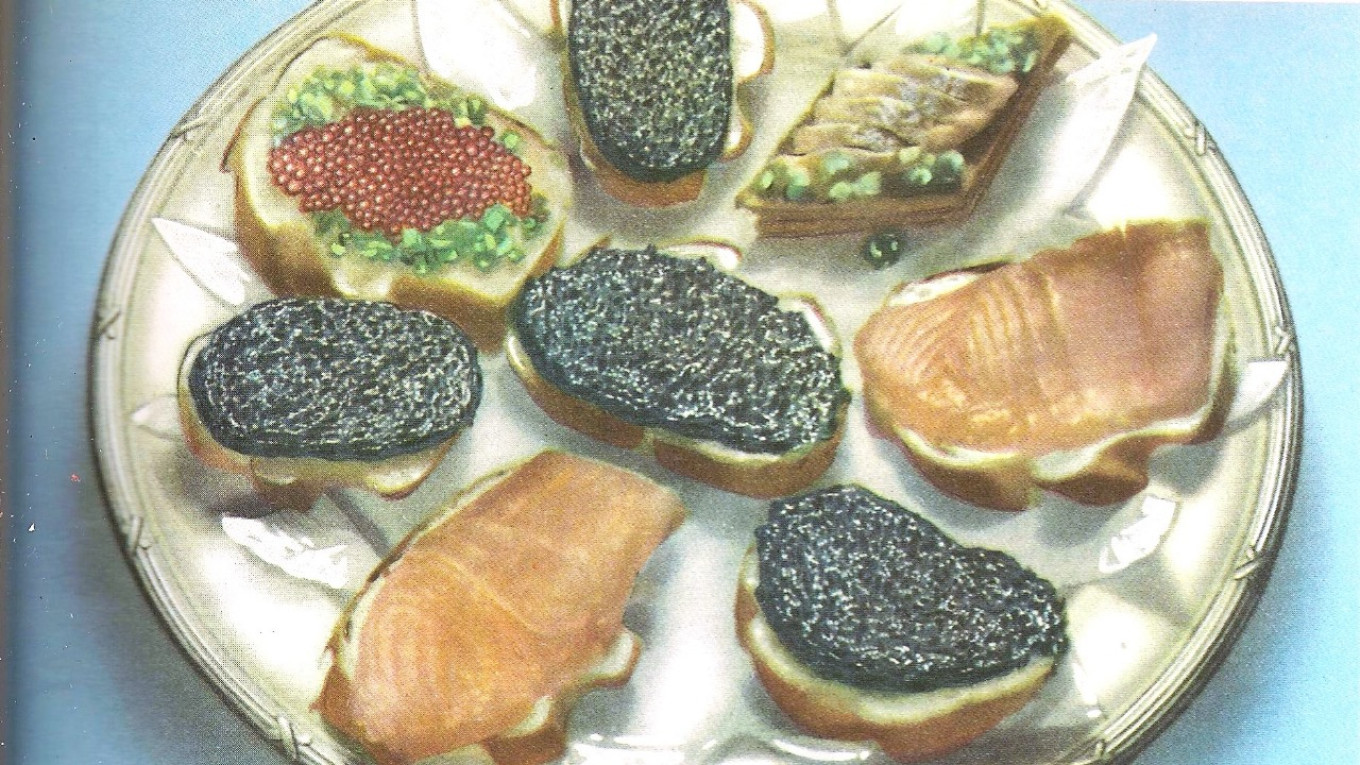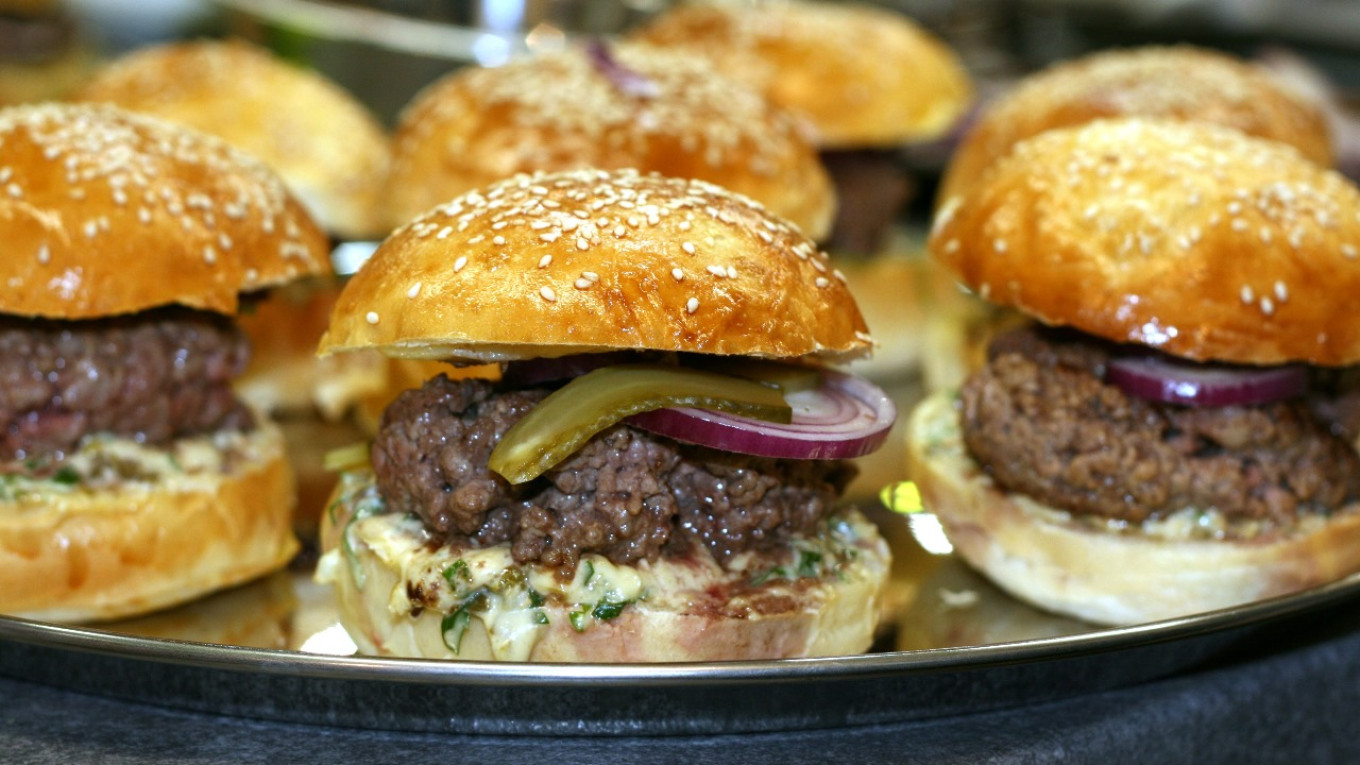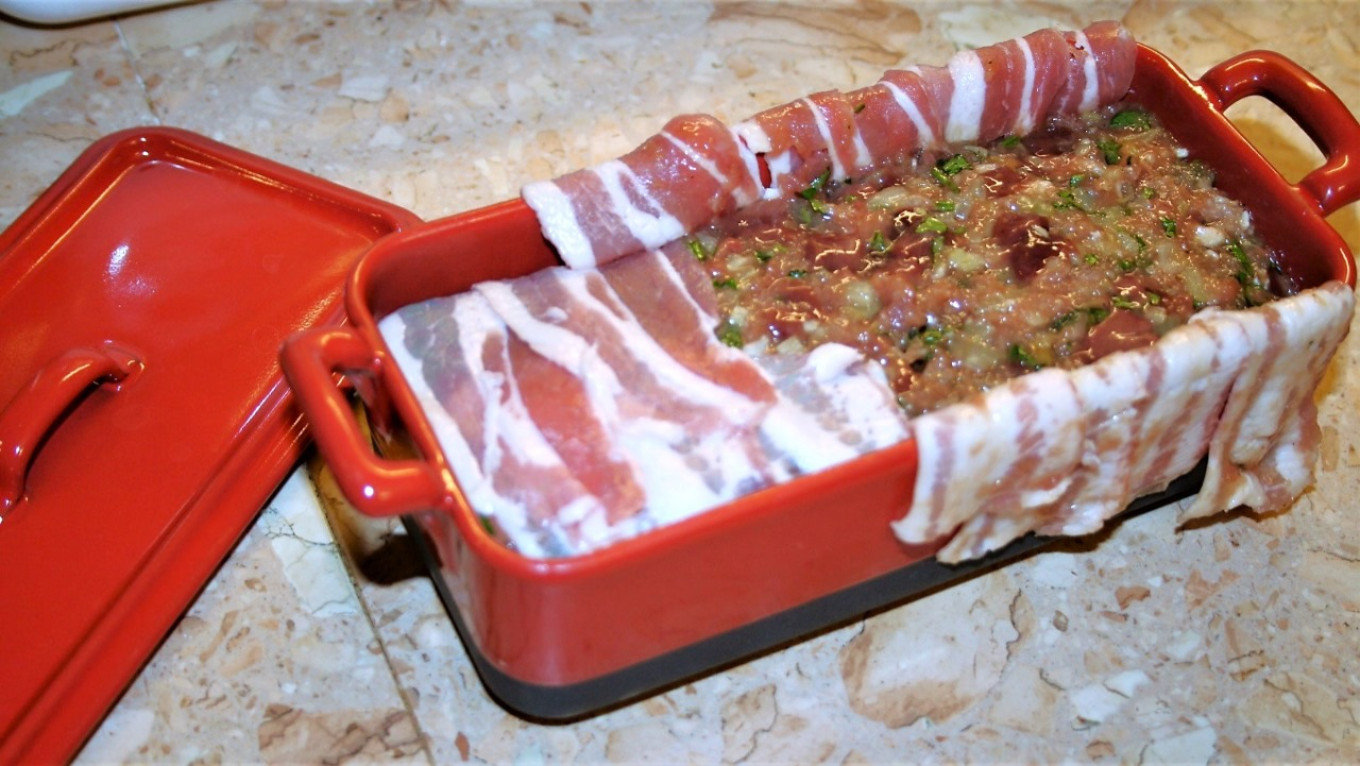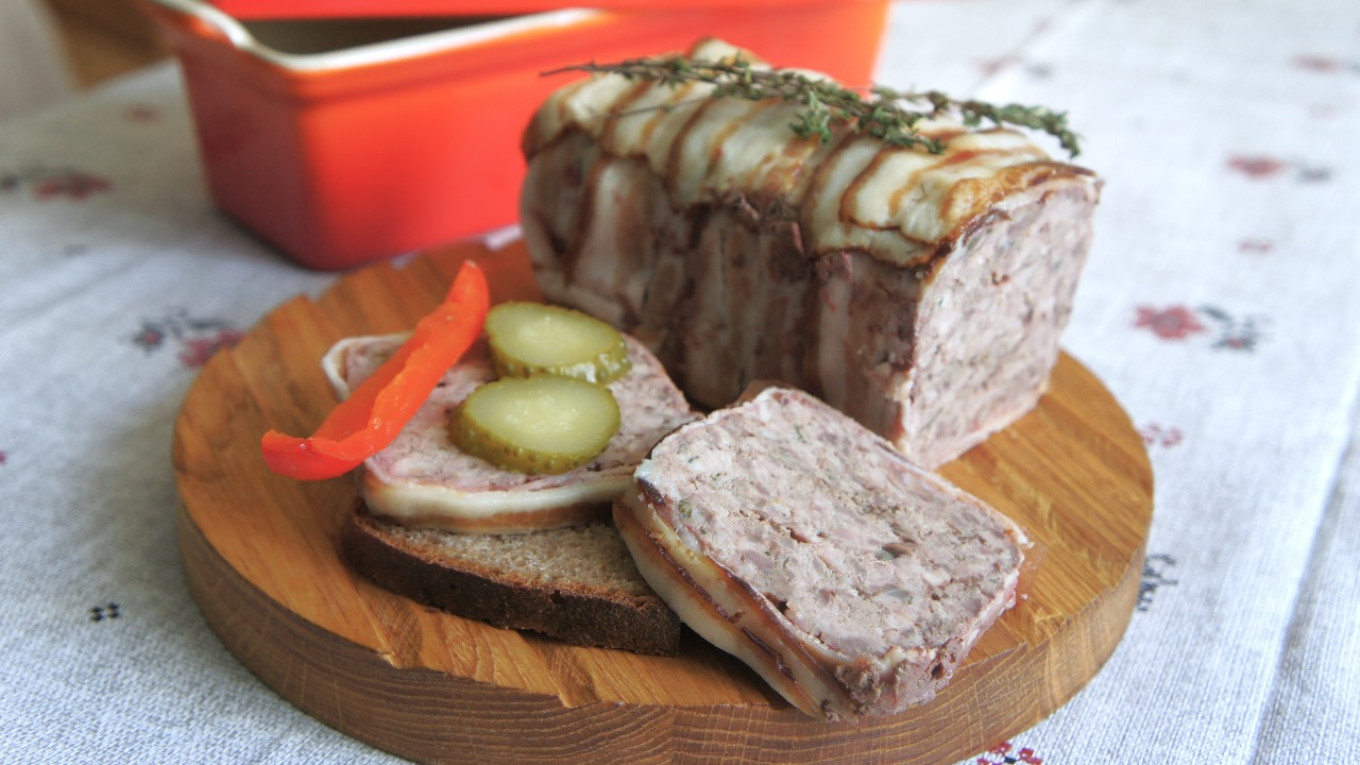The phrase “Russian sandwich” doesn’t sound entirely natural, especially since the Russian word for sandwich — бутерброд — is so clearly borrowed from German (Butterbrot, which means bread and butter). On the other hand, we’ve gotten used to the terms “Russian mayonnaise” and “Russian champagne” — the names of favorite products that have been around for many decades.
But sandwiches are a bit different. In the pre-Petrine period of history, there was no word for sandwich. Of course, people put a piece of ham on a slice of bread, and certainly many people put them in the traveling bags before a trip. Cheese sandwiches were another matter. Before the time of Peter the Great there were no hard cheeses in Russia at all. You could put something like soft cheese on a piece of bread, but this would not have been practical on the road. It would crumble or be smashed into an unappetizing mess.
Everything began to change when Peter the Great ruled Russia and introduced innovations to many aspects of life, including in the kitchen. The German way of serving meat, cheese or fish on bread first became popular among the nobility. Soon it won over many ordinary middle-class people who liked to invite guests for dinner. For the the open-faced sandwich was something like the buffet of the 18th century — a way of serving food that fit into Russian life very easily. In affluent homes there was even a special table for appetizers called поставец (sideboard). Imagine an evening with guests. People come in from the cold. They don’t immediately sit down at the table, but they first stand in the living room and chat with their hosts and the other guests. And they have a drink, which is where the sideboard comes in. It would hold a variety of appetizers and everyone’s favorite drinks — fruit liquors and infusions. Platters of caviar, salmon and buzhenina (marinated and roasted meat) were most conveniently served as open-faced sandwiches.

From the time of Peter to the Great right up until the second half of the 19th century, sandwiches were usually on the appetizer menus of receptions, restaurants or expensive inns with pretenses of being “high style.” The next step into everyday eating habits only happened in the 1870-90s.
What changed? Butter changed.
Butter was a long-standing problem in Russian cuisine. The most common kind of butter — which was called “Russian butter” — was clarified butter. Until the end of the 19th century what we now call plain old butter was called Chukhonsky butter, named after the place it was made in the Baltic states and Finland. It was only sold widely in Russia at the very end of the 19th century. As you can see in old Russian cookbooks, the best butter at the time was called “farmstead” (from a word for an Estonian farm holding) or “cream.” These were just names for “fat made from milk,” not descriptions of their qualities. The first butter made from sour cream had a delicious, slightly salty flavor. It was of course not used for frying, but added to more delicate dishes like scrambled eggs, mashed potatoes, omelets, puddings, cookies. It was also actively used on homemade sandwiches.
As contemporaries noted, “if they want to eat butter” then they need butter that was “made to the last degree of perfection.” The most famous of this variety in St. Petersburg was Shvartsovsky butter, named after the owner of a huge estate on the border with Finland, which had up to 2,000 dairy cows in its heyday.

Finally, the next stage of Russian “sandwich history” is the USSR and Soviet cuisine. There the sandwich had an entirely different meaning and purpose, if you will. It was no longer a “high class” treat but something to make a woman’s life easier — a quick snack made at home that was convenient and easy. In the mid-1930s sausages — kolbasa — began to be made in factories, producing the store-bought sandwich fixings we still use today, such as Krakow kolbasa or Doctor’s kolbasa. This made sandwiches easy for everyone. Another important feature of Russian sandwiches was cheese, which was used very differently in Soviet times. For former Soviet citizens and most Russians today, cheese is a sandwich. A piece of cheese eaten with red wine or grated Parmesan in pasta is enjoyed by 100th of 1% of the Russian population. For the vast majority of people in Russia, “cheese” means a slice of cheese on buttered bread for breakfast in the morning.

The Russian sandwich is different, of course, both in what it looks like and what it is made with. In fact, it is a relic of the cuisine of 300 years ago — it has survived almost unchanged from the era of Peter the Great when a piece of sausage was placed on top of a slice of buttered bread. The entire European evolution of the sandwich, from sandwich to burger, seems to have passed us by.
For most people around the world, a sandwich is a piece of roasted or smoked meat with vegetables and herbs between two pieces of bread without any butter. According to legend, it was invented in 1762 by the Earl of Sandwich to eat during a card game so he wouldn’t soil his hands. Its numerous national variations — croque monsieur, panini and others — were all made the same way. The only difference was that a burger, unlike a sandwich, was a patty of chopped and pre-cooked meat.
None of that was in the traditions of Russian patriarchal cuisine. Sandwiches made with lettuce, sliced peppers and cucumbers never entered the Russian culinary mainstream. Chopped meat patties were a novelty for us even in the early 19th century. Even the poet Alexander Pushkin, a very sophisticated gourmand, was surprised when he tried minced meat cutlets from the town of Torzhok in 1826. By the way, these cutlets were one of the first examples of chopped meat patties in Russia.
Surprisingly, Soviet experiments in this area were not very successful either. Anastas Mikoyan brought the first minced meat patty — aka hamburger — machines from America in 1936 and set up the production of Soviet cutlets at a factory (of his own name) in Moscow. But he failed to instill in his fellow citizens a love for a meat patty on a bun, the Soviet analog of American burger. But in everyday Soviet life, putting a half of a cold meat patty on a piece of white bread with butter was an incomparable pleasure for many people. We learned what a “cutlet sandwich” could be only in 1990 after the opening of the first McDonald’s in Moscow.

But even we sometimes get bored with simple slice of kolbasa on a piece of bread. When that happens we make this little miracle. There’s one little trick though: it can’t be made before bedtime. The whole house or apartment will be filled with such a delicious aroma that you won’t be able to fall asleep. On the other hand, you’ll wake up to a fabulous breakfast.
Russian Sandwich Loaf
Ingredients
- 200 g (7 oz) sliced pork brisket (or ordinary bacon)
- 1 onion
- 6 garlic cloves
- 450 g (1 lb) minced pork
- 400 g (14 oz) chicken liver
- 2 eggs
- 1 bunch of parsley
- 1 Tbsp butter
- salt, pepper to taste
Instructions
- Preheat the oven to 180°C/ 350°F.
- Finely chop onion and garlic and sauté in a frying pan in butter until just softened. Put the pork through a meat grinder and finely chop the chicken liver. Chop the parsley; beat the eggs. In a large bowl mix all the ingredients: the sautéed onion and garlic, minced meat, liver, parsley and eggs. Salt and pepper to taste. Mix everything thoroughly.
- Line a baking dish with bacon strips so that the strips of bacon hang over the sides. Place the prepared mixture tightly in the mold, pull up the bacon to cover the top. If the bacon does not cover the meat completely, add more strips of bacon lengthwise so that the entire pâté is covered with bacon.

- Cover the pan with a lid (or foil) and put it in a baking tray with high sides. Fill the tray halfway with water and place in the oven. Bake for 2 hours.
- After about 45 minutes the house will be filled with delicious aroma. But don’t succumb! Let it cook fully, take out, cool to room temperature and put in the refrigerator overnight. The next day before serving, cut the loaf into slices.






